America's most beautiful lakes, ranked
Watery wonders
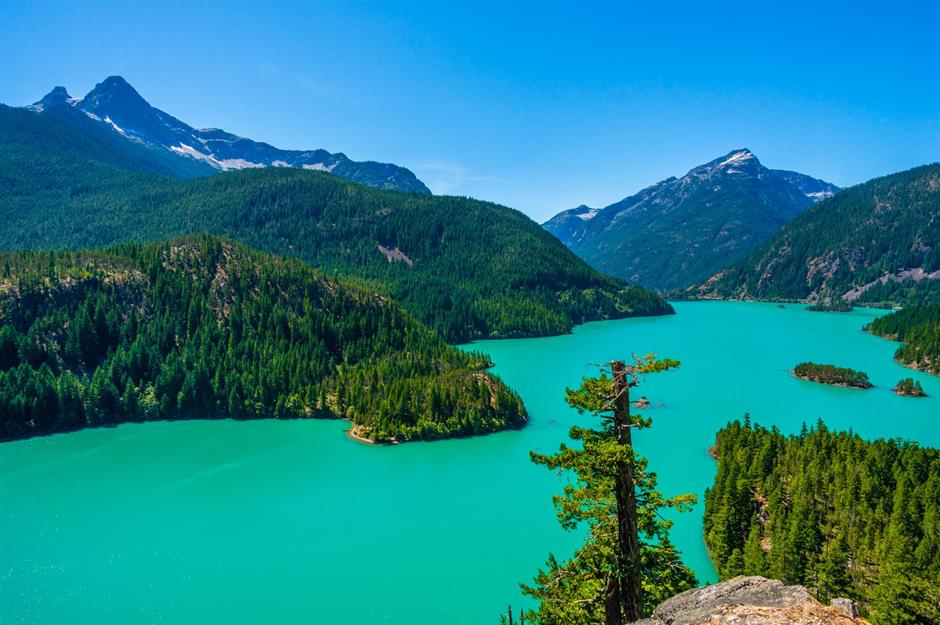
The contiguous United States is home to roughly 480,000 lakes. From the vast expanse of the Great Lakes to a sapphire pool formed within the cone of a collapsed volcano, our team of travel experts has selected and ranked what we believe are the 25 most beautiful lakes in the country.
Click through this gallery for a virtual tour of the most beautiful lakes in America...
25. Avalanche Lake, Montana
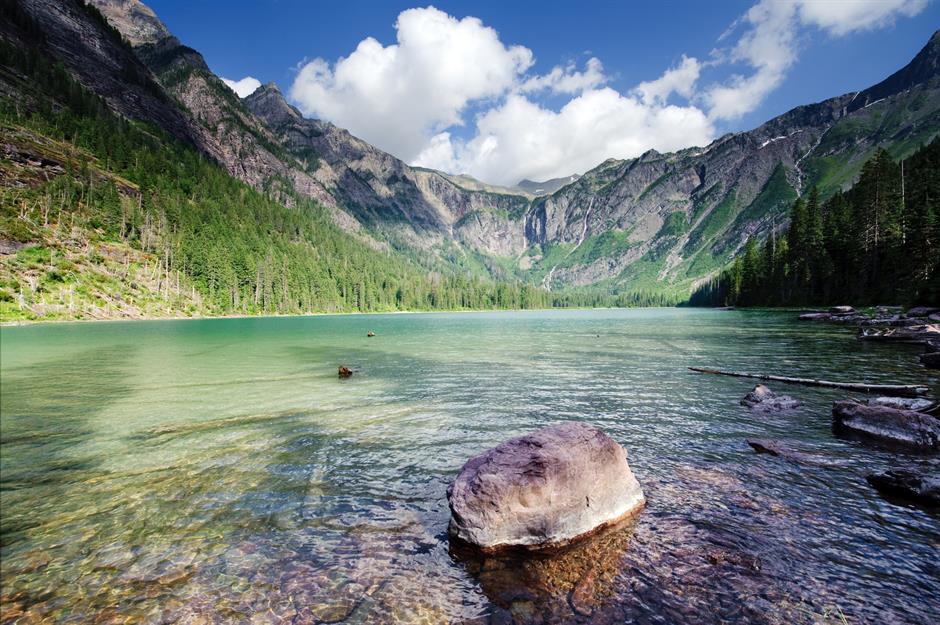
Montana is drowning in beautiful bodies of water, with more than 3,000 lakes and reservoirs across the state. It’s hard to pick the prettiest but Avalanche Lake is a clear contender – located in Glacier National Park, it boasts crystalline, glacier-fed waters, forested shores, and the Rocky Mountains shimmering in the distance like striking wallpaper. In winter, it's prone to avalanches, hence the name.
24. Lake Havasu, Arizona and California
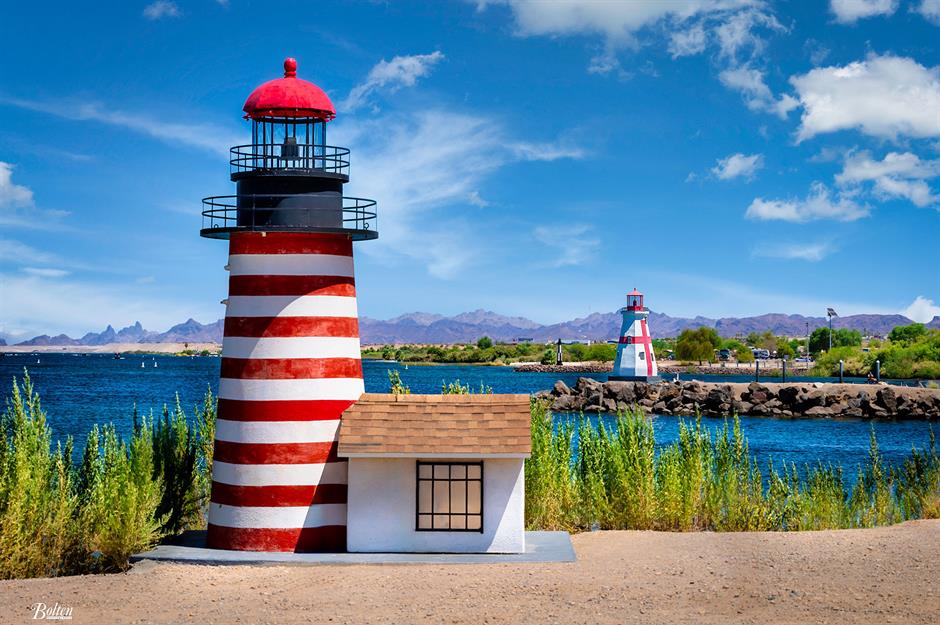
Lake Havasu is a stunning oasis in the Sonoran Desert – a reservoir created by damming the Colorado River, spanning the border between Arizona and California. It’s particularly known for its 28 lighthouses, scaled-down but fully functional replicas of famous West Coast beacons.
Even more iconic is London Bridge: the historic stone structure that once crossed the River Thames in London, dismantled and transported to Arizona block by block in 1968.
23. Lady Bird Lake, Texas
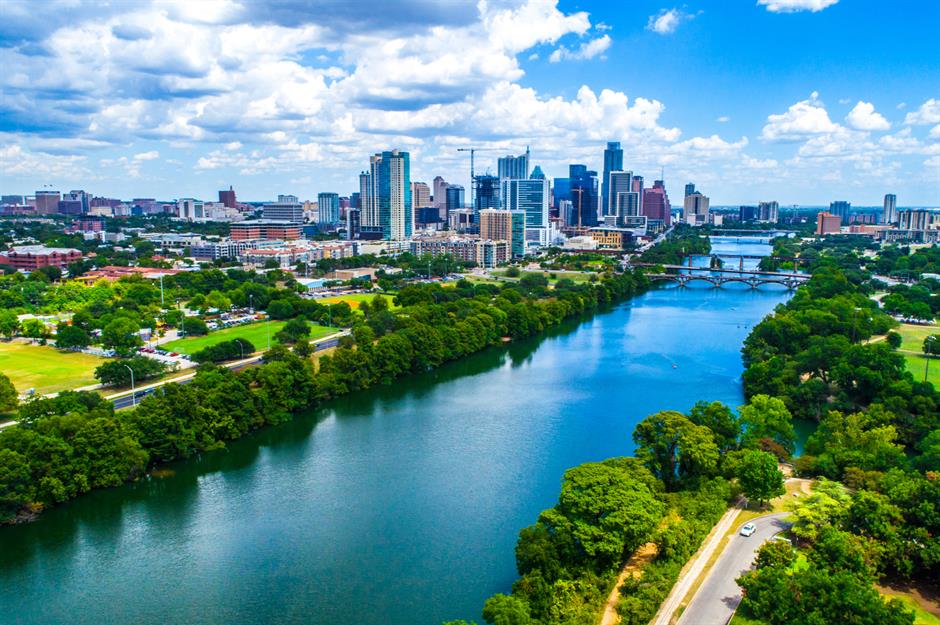
Although more famous for its musical connections, the Texas state capital Austin has a surprising amount of green spaces – and blue. Lady Bird Lake is actually a reservoir whose skinny shape makes it look more like a river.
It was created in 1960 as a cooling pond for a power plant and was later renamed after former president Lyndon B Johnson’s wife, Claudia 'Lady Bird' Johnson. At nightfall, 1.5 million Mexican free-tailed bats flutter from beneath Congress Avenue Bridge (pictured).
Love this? Follow us on Facebook for travel inspiration and more
22. Lake Coeur d'Alene, Idaho
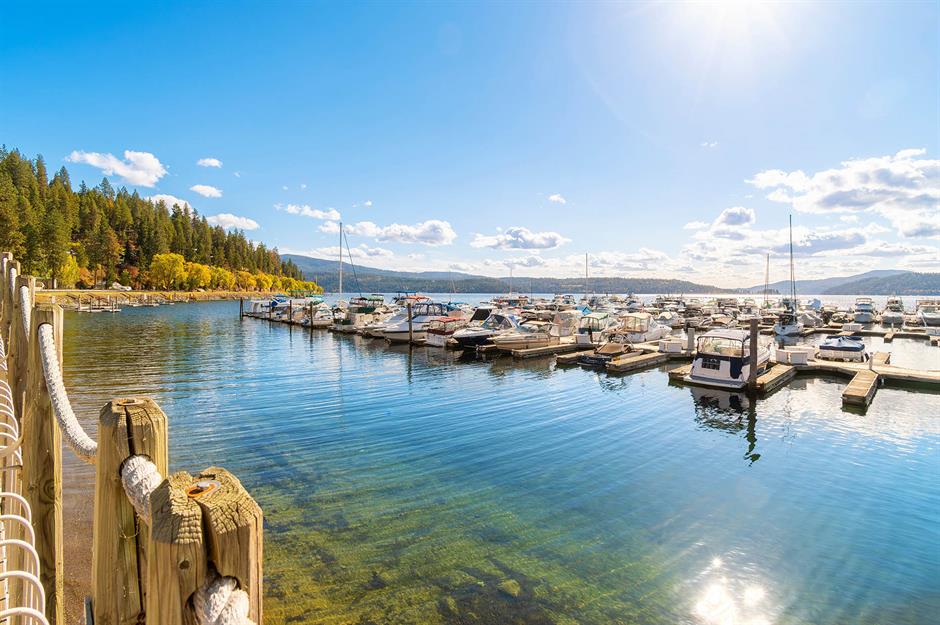
Carved from the landscape by glaciers during the last ice age, Lake Coeur d'Alene dazzles today's visitors just as much as it did 19th-century pioneers.
Marinas, campgrounds, swimming areas, jet ski rentals, and seaplane hangars dot its 135-mile shoreline, with the classic mountain-and-forest backdrop that tourists expect from the Pacific Northwest.
21. Lake Champlain, Vermont and New York
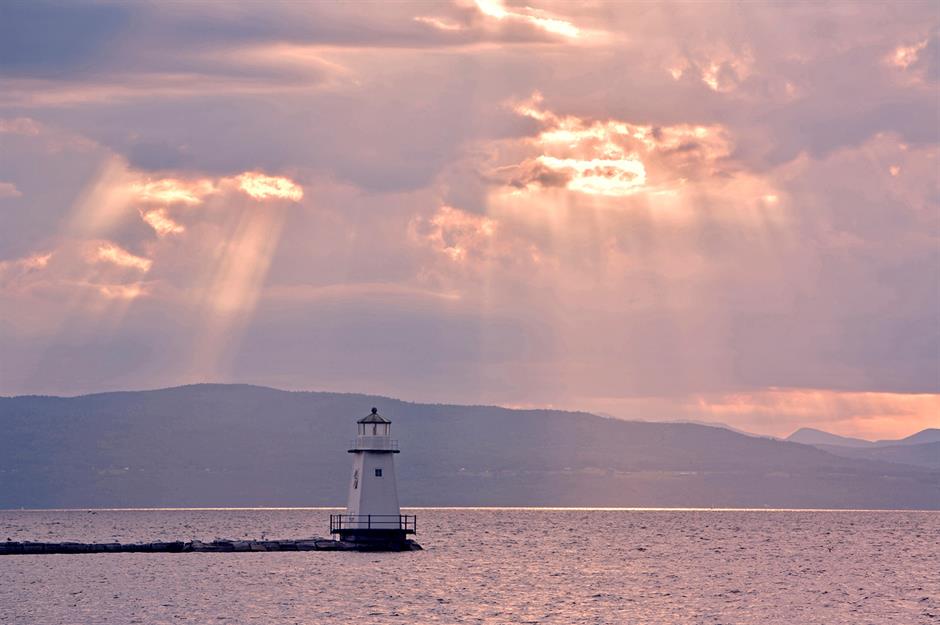
Did you know that Vermont has the world's oldest coral reef? The 450-million-year-old Chazy Fossil Reef, which spans three of Lake Champlain's islands, is certified by Guinness World Records as the most ancient on Earth.
It's not much to look at these days, however, so visitors to the lake tend to cycle its lush shores, sample the fruits of nearby wineries, and relax on its undeveloped isles.
20. Redfish Lake, Idaho
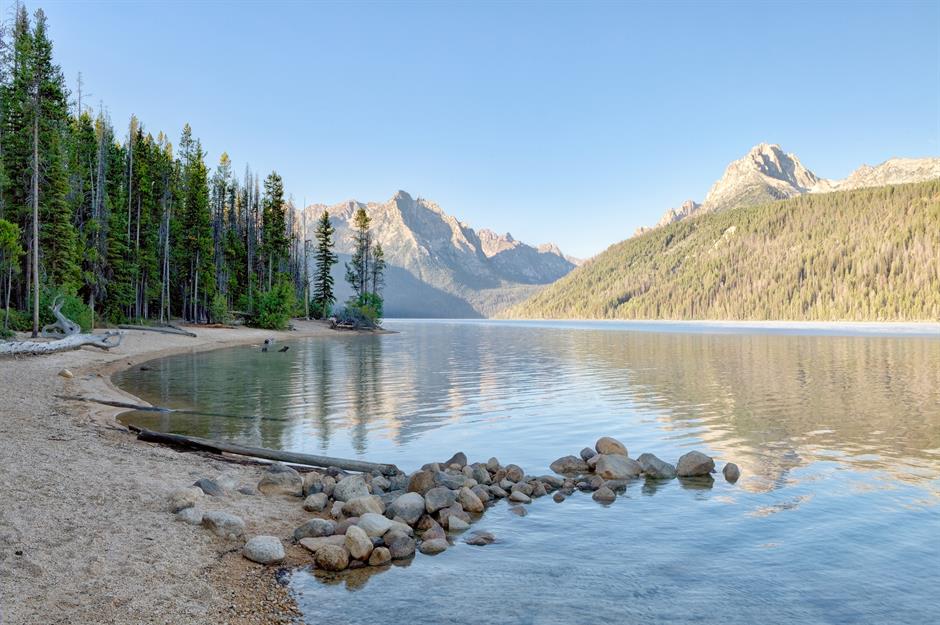
Redfish Lake, part of Sawtooth National Forest, is named for the huge quantities of sockeye salmon that used to arrive here after a 900-mile migration from the Pacific Ocean. Sadly, that number has now drastically dwindled, but the water’s placid surface remains a flawless mirror for the Sawtooth Mountains.
The 4.4-mile-long lake is surrounded by lush alpine forest and majestic mountains. It plunges to a maximum depth of 387 feet, while sandy beaches fringe the shore of the lake’s shallower edges.
19. Lake Santeetlah, North Carolina
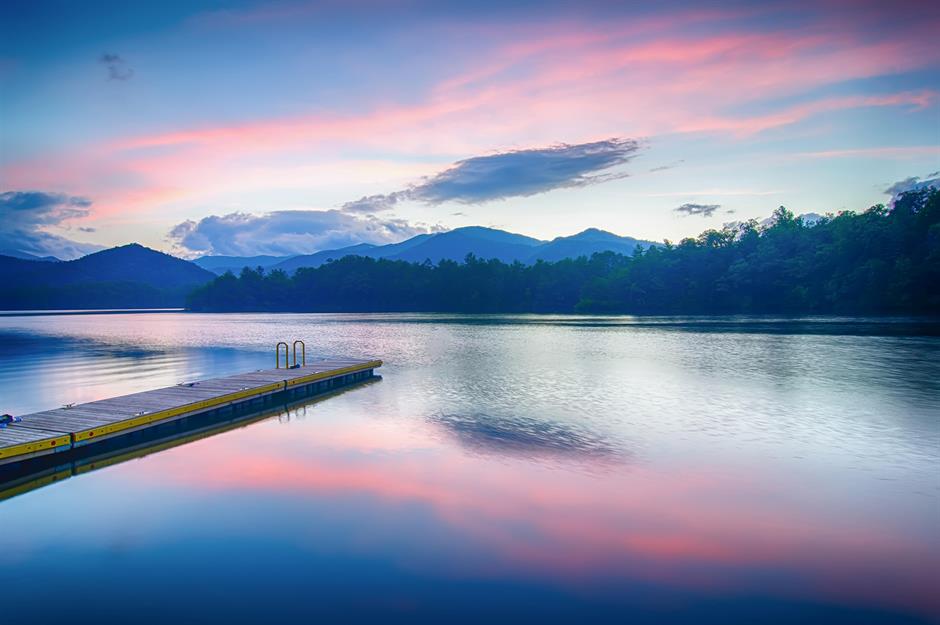
Surrounded by the Nantahala National Forest on most of its 76-mile shoreline, Lake Santeetlah is an aquatic island of serenity, cut off from the rest of the state and the world.
In the shadow of the Great Smoky Mountains, its soothing waters are perfect for fishing, boating, or swimming, while the surrounding woodland hides campsites and 200 miles of trails. Wildlife-watchers should look out for beavers, otters, eagles, and hawks.
18. Jenny Lake, Wyoming
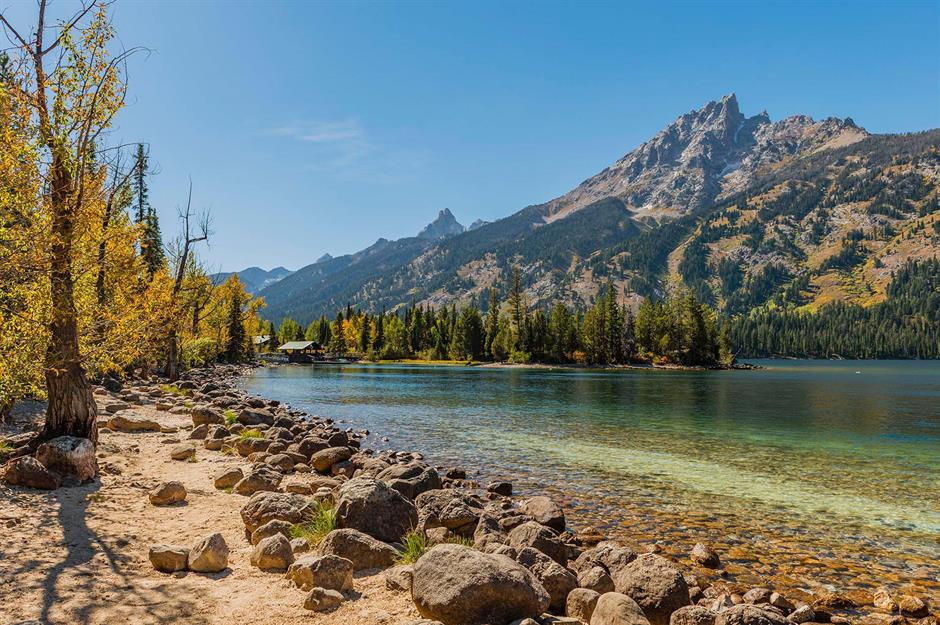
Jenny Lake is another charmer set at the foot of some mountains, this time the Grand Teton range in the national park of the same name.
The vertiginous Cascade Canyon, the thundering Hidden Falls waterfall, and endless alpine woodland mean there's natural spectacles aplenty, and plenty of ways to enjoy them. Outdoorsy types can hike or boat, while the Jenny Lake Scenic Drive does exactly what it says on the tin.
17. Lake Jocassee, South Carolina
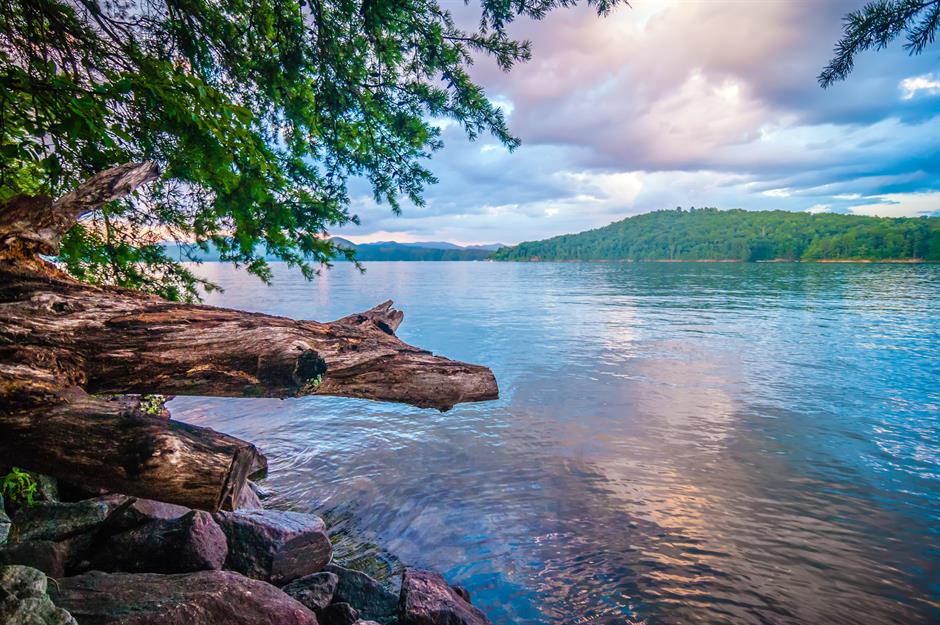
Lake Jocassee is another man-made beauty proving natural isn’t always best. This reservoir was created in 1973 and is fed by cool, clear water flowing from Appalachian mountain rivers. The shores are largely undeveloped, with tucked-away coves, rocky outcrops, and waterfalls.
Jocassee literally means 'place of the lost one' in Cherokee, which only adds to the romance of this beautiful spot. The 7,500-acre reservoir plunges to a maximum depth of around 300 feet and has a smattering of small islets.
16. Flathead Lake, Montana
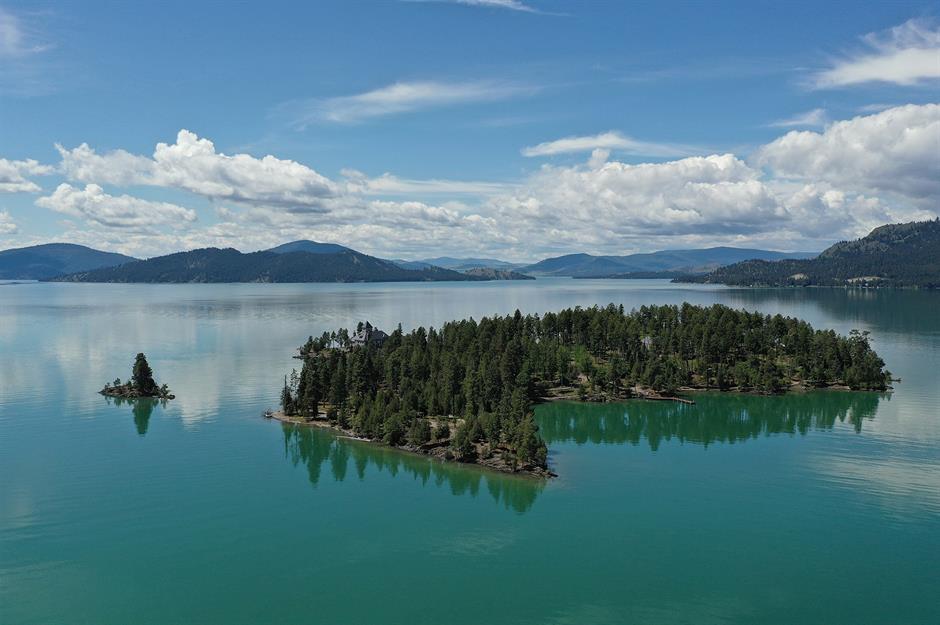
The largest natural freshwater lake west of the Mississippi, Flathead Lake's famously clean waters are equally famous for their fishing, with perch, whitefish, and trout drawing anglers from all over.
Swimmers compare floating in the crystalline lake with flying, and the excellent visibility means that the views below the water can almost compete with the mountain vistas around the lake's shores. Keep your eyes peeled for wild horses and bighorn sheep.
15. Hanging Lake, Colorado
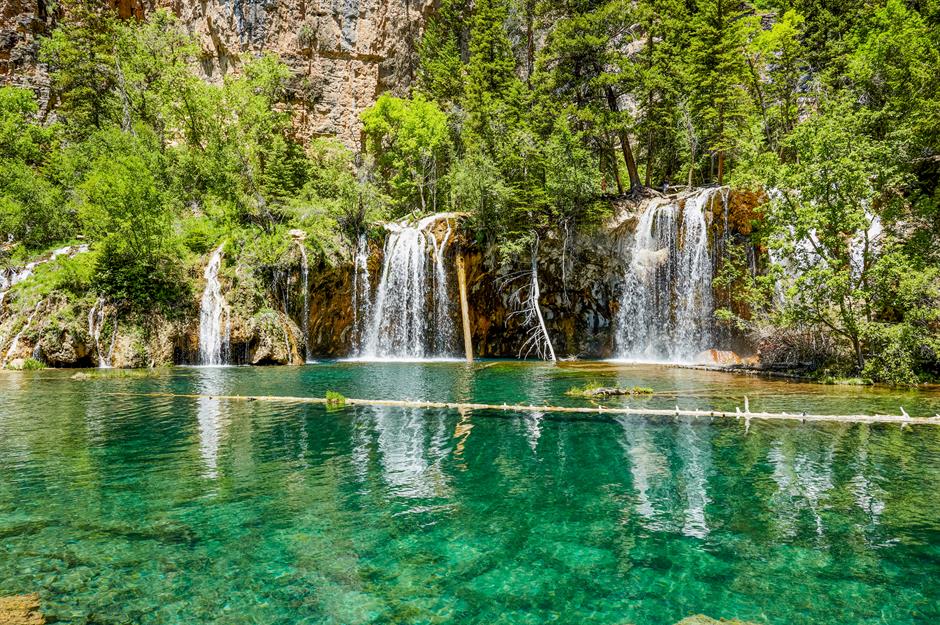
Waterfalls cascade into shimmering, spearmint-hued pools at Hanging Lake, located in Glenwood Canyon. The lake is so named because it appears to hang from a cliff, and its dramatic beauty more than makes up for its small size.
This stunner was designated a National Natural Landmark in 2011, and is a unique example of a lake formed by travertine (a type of limestone) deposition. It also boasts one of the best and largest hanging garden plant communities in the province.
14. Diablo Lake, Washington
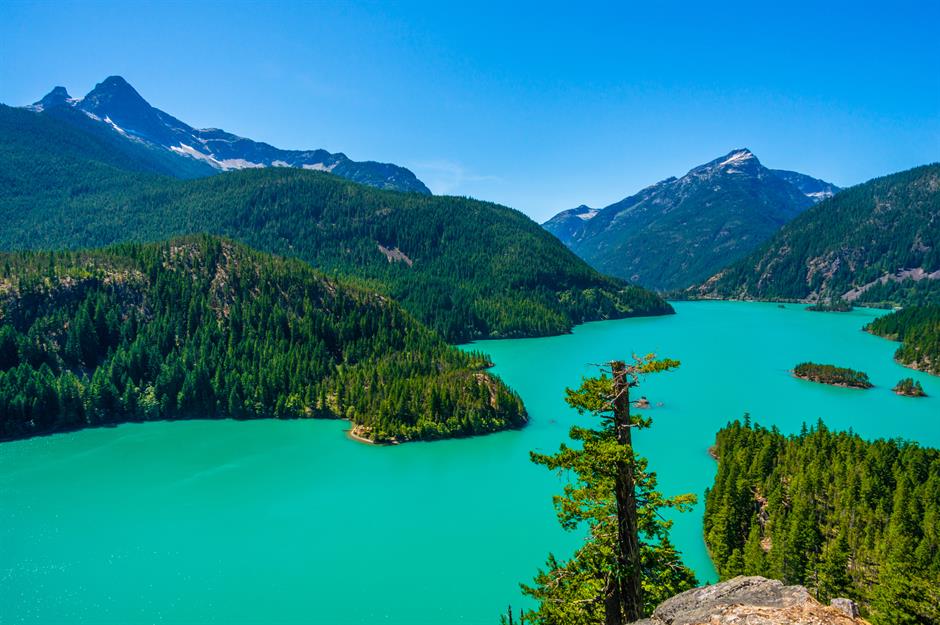
Many lakes are described as turquoise, but Diablo Lake outdoes them all. Its vivid appearance is caused by flour-like particles ground from the rock of surrounding glaciers, and illuminated by sunlight.
The lake is framed by snow-capped peaks and waterfalls, while the forest that surrounds it is home to black-tailed deer and hoary marmots, who whistle when they sense predators nearby.
13. Lake Clark, Alaska

Alaska makes even Montana look a little dried up. The northernmost state has around three million lakes, which makes you wonder how there’s any dry land at all.
Some are seasonal, fed by snowmelt and glaciers, but Lake Clark – part of Lake Clark National Preserve – is full all year round. One of many lakes in the preserve, Lake Clark’s skinny, turquoise body stretches to around 50 miles in length, and the limpid water is fed by waterfalls, rivers, streams, and glaciers.
12. Mendenhall Lake, Alaska
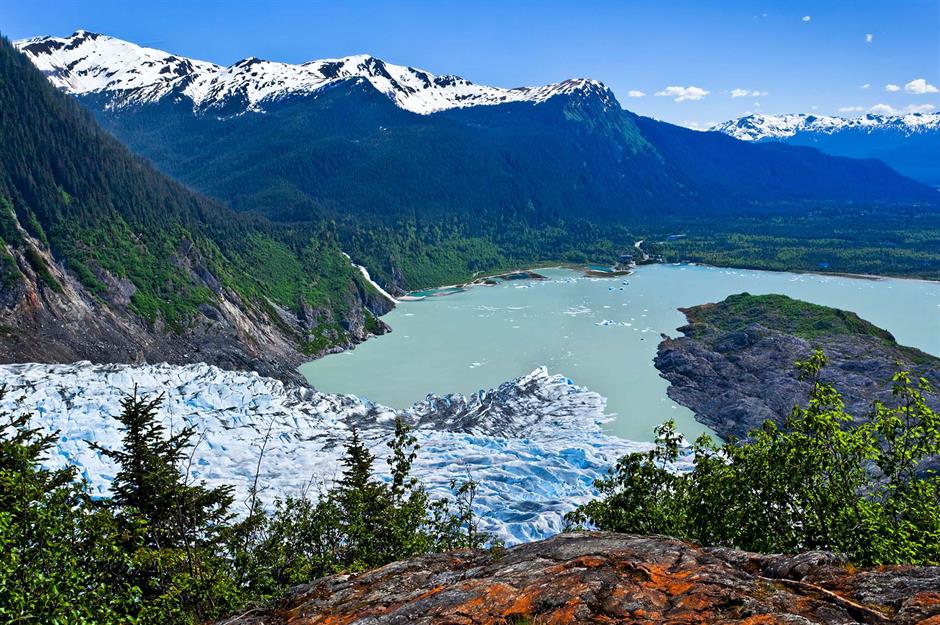
Just 13 miles from Alaskan state capital Juneau, Mendenhall Lake owes its fame mostly to the magnificent glacier that shares its name.
Tumbling down the mountainside like a static river of ice, the glacier plunges from the majestic Juneau Icefield, and packs ice up to 1,800 feet deep. Lush forests and snow-capped peaks complete the scene, while canoes, hiking trails, and helicopters can all help visitors take a closer look.
11. Mono Lake, California
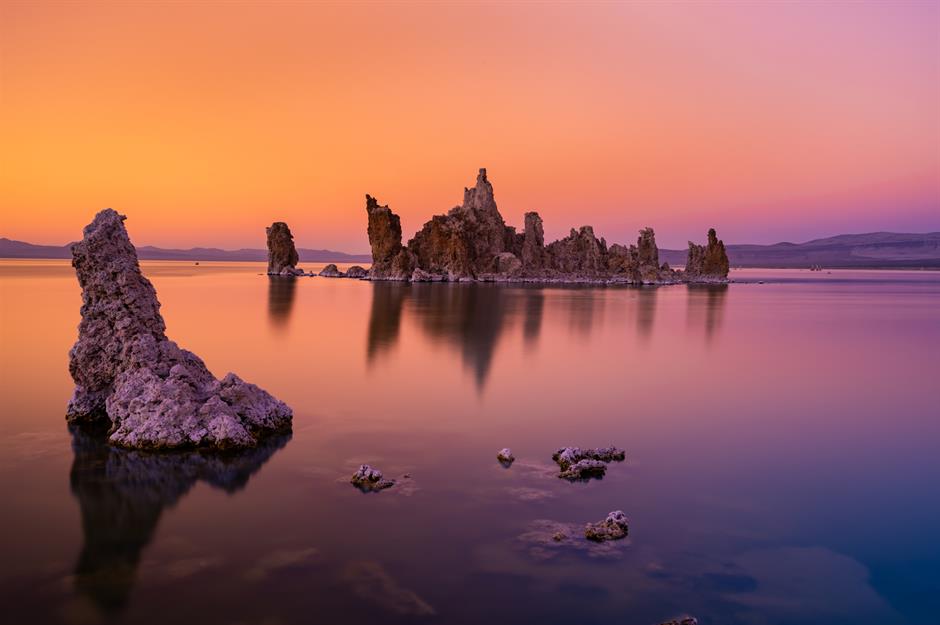
Mono Lake, close to Yosemite National Park, is twice as salty as the ocean because it has no outlets. Covering 70 square miles, this so-called inland sea formed more than 760,000 years ago, yet its most striking features – the spindly limestone tufa towers – were exposed in the 1980s thanks to lowering water levels.
You could scroll through photos of this natural beauty for hours. The snow-capped peaks of the Sierra Nevada mountains are mirrored in the water on clear days and there's wildlife aplenty. Waterfowl splash around and wild horses roam in nearby meadows.
10. Caddo Lake, Texas and Louisiana

This swampy lake straddles Texas and Louisiana, and it could hardly be more Southern in its feel and appearance. Spanish moss drips from cypress trees, while alligators can be spotted basking on logs alongside herons, turtles, and armadillos.
The lake has an ethereal, slightly spooky beauty, and some claim that it's prime Bigfoot territory (people call him 'the Caddo critter').
9. Lake George, New York
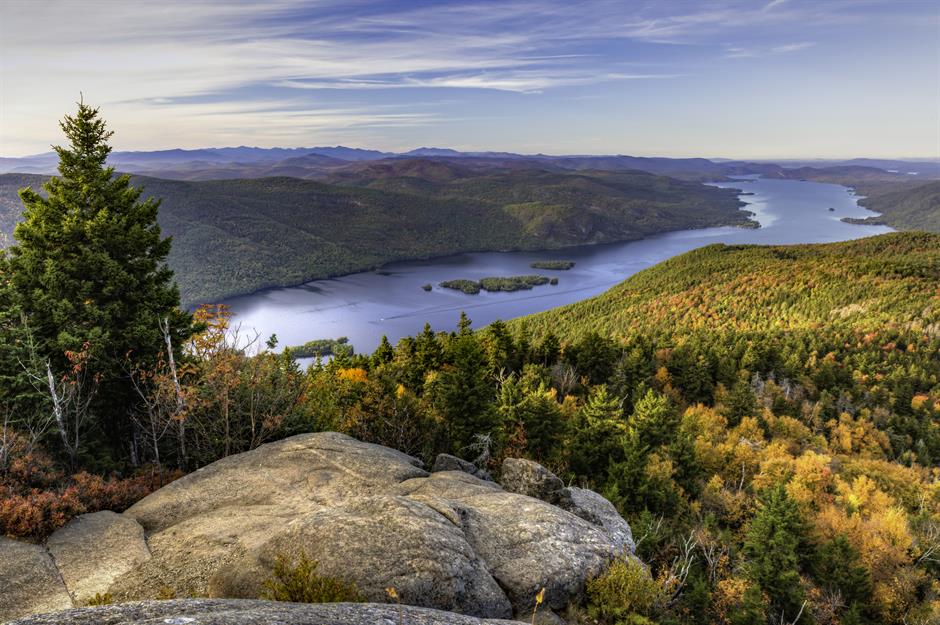
Lake George is nicknamed 'the Queen of American Lakes,' and President Thomas Jefferson described it as "the most beautiful water I ever saw."
The natural wonder, which glistens at the base of the Adirondack Mountains, lives up to the hype – renowned for its 45 square miles of soothing, clear expanse. Lake George, which was formed some 10,000 years ago, is dotted with more than 150 islands.
8. Lake Superior, Michigan
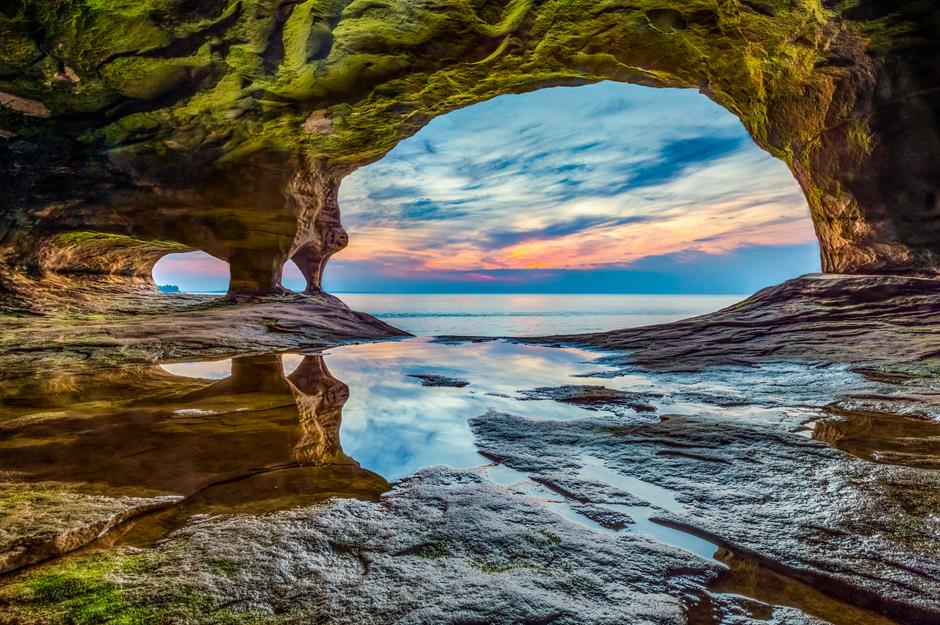
It’s hard to argue with a boastful name like Lake Superior. The biggest of the Great Lakes chain and the world’s largest freshwater lake by surface area (it covers 31,700 square miles), it feels more like an ocean.
The lake surrounds Isle Royale National Park, an archipelago of more than 200 islands – some of which have their own mini-lakes, waterfalls, and even shipwrecks. The largest, Isle Royale, has wildlife including wolves and moose.
7. Echo Lake, New Hampshire
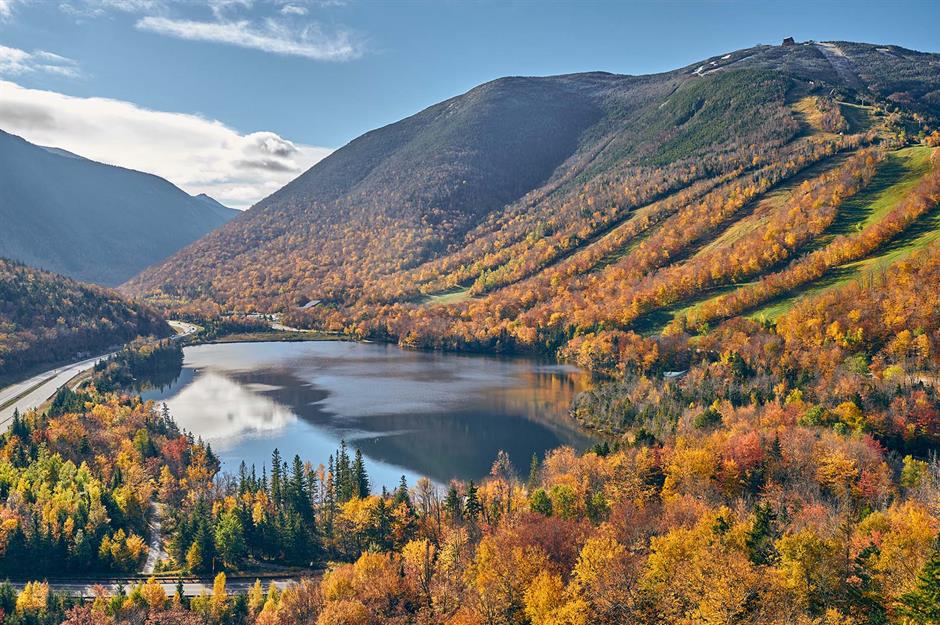
Fall is the season to visit New Hampshire's Echo Lake, when the hiking trails that line its shores erupt in shades of orange, yellow, green, and brown. The surrounding vistas include two soaring rock faces – Cathedral Ledge and White Horse Ledge, both popular climbing spots – and tree-coated hillsides rise in every direction.
In summer, visitors flock to the lake's sandy beach and roped-off swimming area, while canoes, kayaks, and pedal boats propel them out onto the water.
6. Lake Chelan, Washington
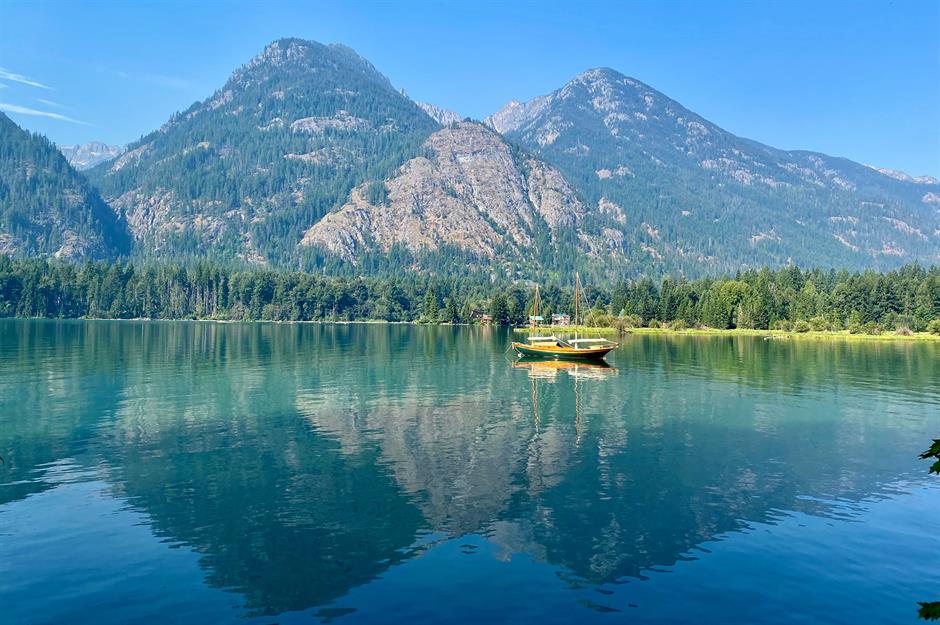
Surrounded by the Cascade Mountains – as beautiful in the lake's still reflections as they are against the sky – Lake Chelan is long, thin, and deep.
In fact, it's around 50 miles long and the third deepest lake in the US, while its snake-like shape means that two shores' worth of scenery is always on hand. The ultra-clear azure water is very popular in summer, while in winter the snow-blanketed landscapes take center stage.
5. Yellowstone Lake, Wyoming
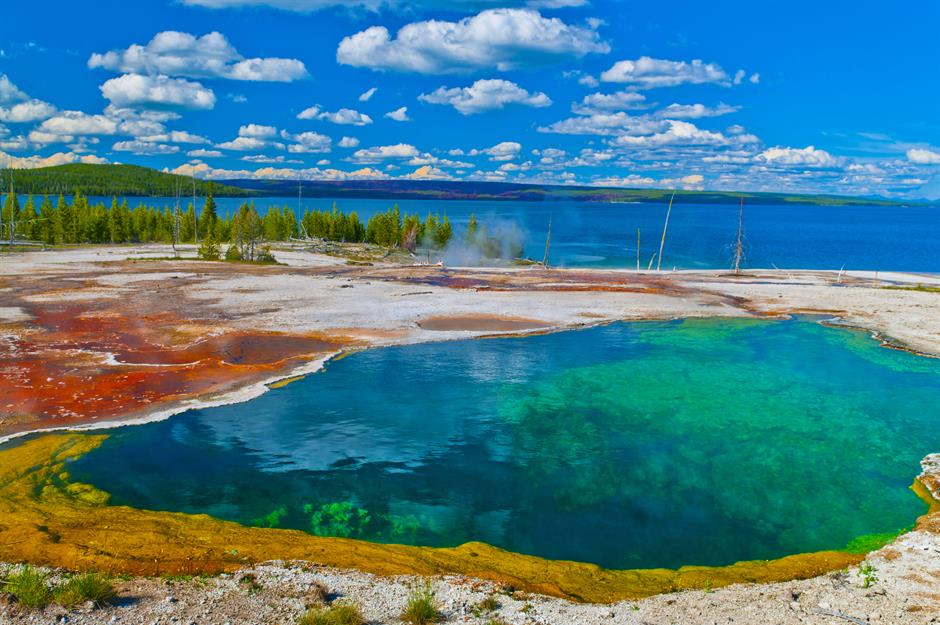
Vast Yellowstone Lake freezes completely in winter and thaws in late spring, but it’s strikingly beautiful at any time of year. Bordered by Yellowstone National Park's vivid geothermal springs, its shimmering surface conceals hidden depths.
Recent research has found that, if the lake were drained of water, it would reveal geysers, hot springs, and canyons like those found elsewhere in the park. There are many creatures that call Yellowstone home – bighorn lambs, bear cubs, elk calves, and baby bison, among others.
4. Maroon Lake, Colorado
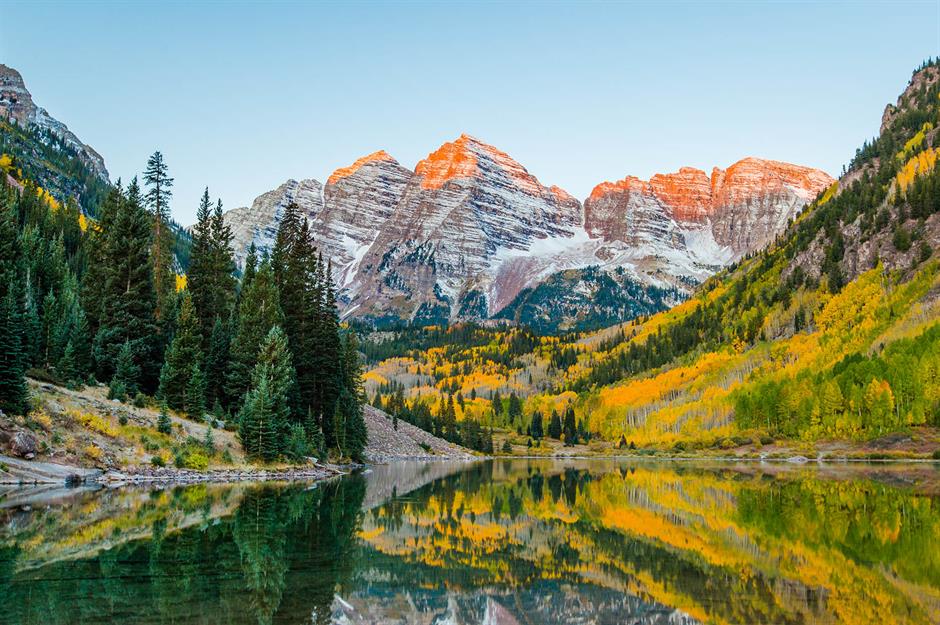
Perhaps the most photographed mountains in America, the Maroon Bells look their very best when reflected in the delightfully still waters of Maroon Lake.
The center point of the Maroon Bells Scenic Area, the lake sits 9,580 feet above sea level, 10 miles from Aspen at the end of a simple hike. Fall foliage and thin blankets of snow complete the scene, while a visit at the right time of day sees the peaks lit up with a vibrant orange glow.
3. Lake Powell, Utah and Arizona
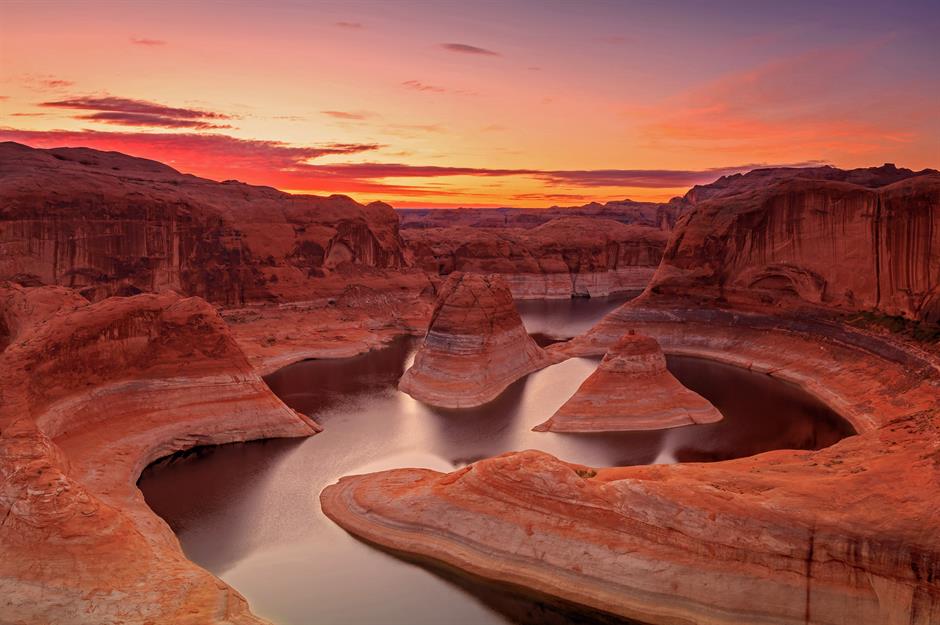
Mother Nature is a pretty talented painter, but man-made lakes can be just as gorgeous as their natural counterparts. None prove it quite so convincingly as Lake Powell, which straddles Utah and Arizona.
Mind you, the reservoir’s appeal is boosted by its proximity to natural bridges, dams, and canyons carved into the red and apricot rock. Its beauty hasn't gone unnoticed. The lake has featured in films including the 1968 version of Planet of the Apes and Oscar-winning Gravity, released in 2013.
2. Lake Tahoe, California and Nevada
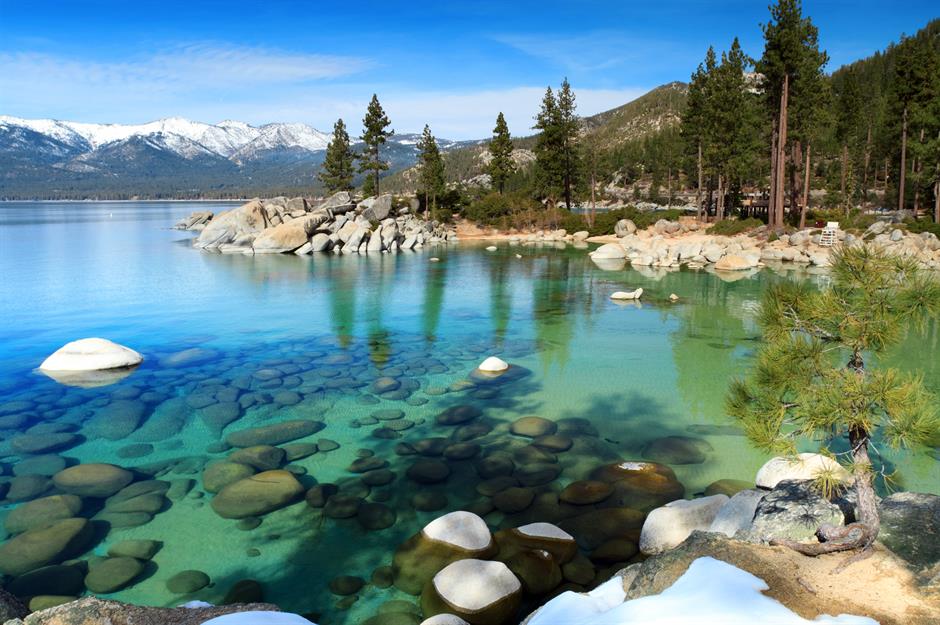
Lake Tahoe, a freshwater lake straddling the California-Nevada border, is truly mesmerizing. Its clear blue waters sparkle against the backdrop of the Sierra Nevada mountains – a sight to behold.
This stunner is among the world's 20 oldest lakes, at around two million years old. The deepest point plunges to 1,645 feet, and if the Empire State Building were submerged here it wouldn't even break the surface. There are some fantastical goings-on too – some say a prehistoric creature lives in the watery depths.
1. Crater Lake, Oregon
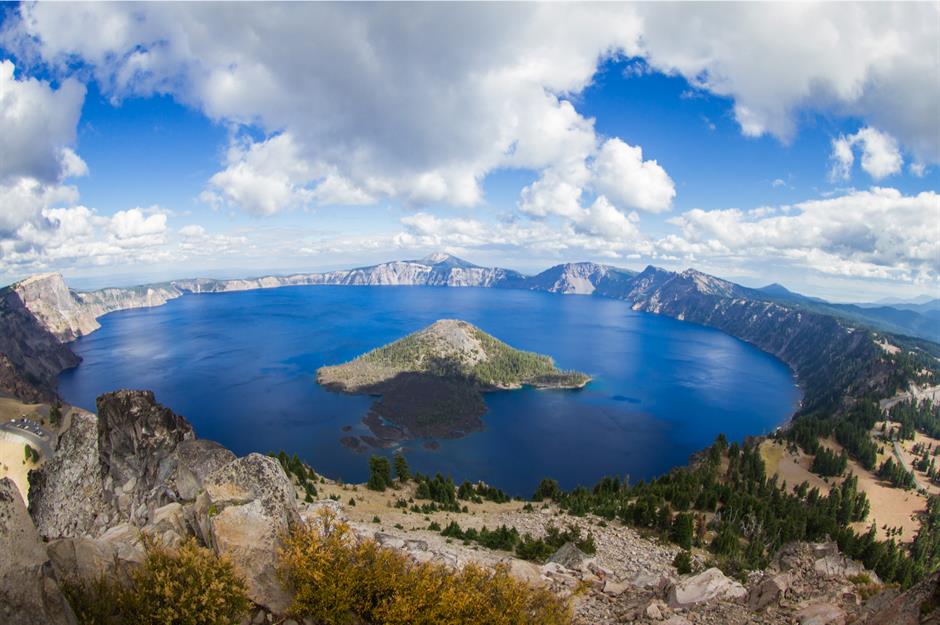
America’s deepest lake – at a staggering 1,943 feet – is often the most camera-shy. In winter it can be hidden in a wall of fog but, if it clears, the blindingly blue water of this caldera basin is breathtaking.
Our pick for America's most beautiful lake of all, it was formed more than 7,000 years ago and is a collapsed volcano filled with rain and snowmelt. The cone-shaped Wizard Island which rises in its center makes it even more distinctive.
Comments
Be the first to comment
Do you want to comment on this article? You need to be signed in for this feature